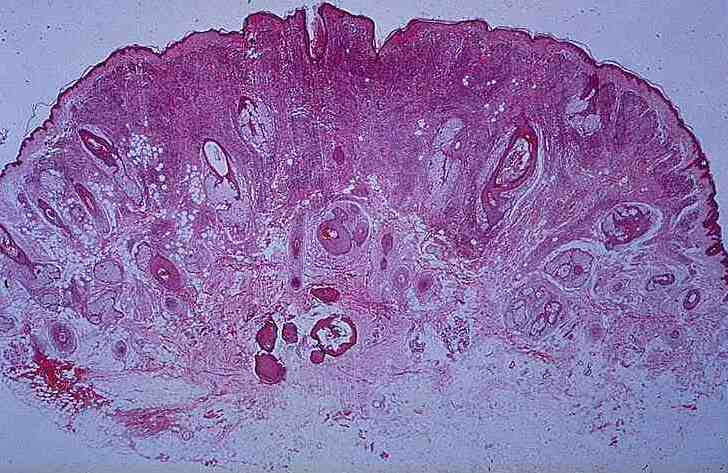
Skin Naevus

1.
Is this a neoplastic process?
Yes.
It is a neoplasm, but it�s not malignant.
2.
Name the cell
involved.
The melanocyte.
3.
What is the
brown pigment?
Melanin
4.
What
is the relationship of the proliferative process to the epidermis and dermis?
At
first, large melanocytes aggregate in nests under the lower layers of the
epidermis at the junction with the dermis (junctional naevus).
With the passage of time, the junctional component �matures� and
becomes less prominent and active.
The majority of these naevi convert into intradermal naevi (seen as
melanocyte clumps present in the upper dermis).
Is
brought about by cytokines and growth factors
T
5.
How do you
sub-classify this proliferative process according to their location and what is
the biological significance of this?
This proliferative process is classified as intradermal naevi. They are characteristic matured forms of benign naevi that cells in the deeper part of the lesion are smaller than the more superficial cells. They occur commonly as slightly raised brown nodules. With extension into the dermis, the nevus cells undergo maturation and become non-pigmented.
On
the other hand, melanoma initially extends horizontally within the epidermis and
superficial dermis during which it does not metastasize. With extension into the
dermis, they lose cellular maturation and develop ability to metastasize.
<< PREVIOUS INDEX NEXT SLIDE >>
Copyright � Joseph Ong 2003